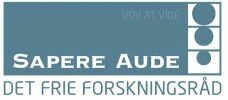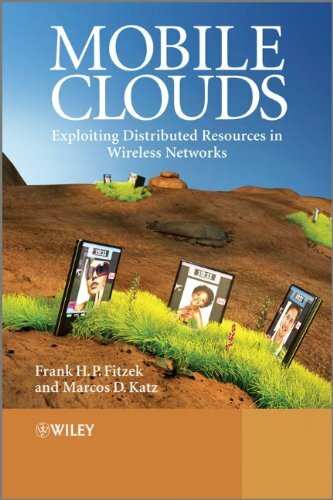Selected list of AAU projects I was leading through my stay.
 The GREEN MOBILE CLOUDS project advocates mobile clouds to be the future service platform for mobile communication networks. Mobile clouds are networks where mobile devices are connected directly with each other to generate services for each other. In contrast to state of the art approaches, these service do not depend on any network provider and therefore open a new dimension of services. New service are the key enabler for new markets. In order to increase the battery life of the mobile device and to decrease the over all energy spent by the network providers, the mobile clouds are designed to be green, that is, aiming at higher energy and power efficiencies. Beside the theoretical work on green mobile clouds, implementations will give valuable feedback on the theoretical work as well as helping to break ground towards real products in order to create a significant social-economical impact for Denmark. the project is carried out with prestigious international partners from US(Massachusetts Institution of technology and Harvard) and Europe(Finland, UK, Budapest) forming a world leading research cluster in the field of mobile clouds.
The GREEN MOBILE CLOUDS project advocates mobile clouds to be the future service platform for mobile communication networks. Mobile clouds are networks where mobile devices are connected directly with each other to generate services for each other. In contrast to state of the art approaches, these service do not depend on any network provider and therefore open a new dimension of services. New service are the key enabler for new markets. In order to increase the battery life of the mobile device and to decrease the over all energy spent by the network providers, the mobile clouds are designed to be green, that is, aiming at higher energy and power efficiencies. Beside the theoretical work on green mobile clouds, implementations will give valuable feedback on the theoretical work as well as helping to break ground towards real products in order to create a significant social-economical impact for Denmark. the project is carried out with prestigious international partners from US(Massachusetts Institution of technology and Harvard) and Europe(Finland, UK, Budapest) forming a world leading research cluster in the field of mobile clouds.
 Greenet is an Initial Training Network (ITN) Marie Curie project that is focused on the analysis, design, and optimization of energy efficient wireless communication systems and networks. It will create a fully-integrated and multi-disciplinary network of 17 Early Stage Researchers (ESRs) working in 10 first-class institutions distributed in 7 European countries. The consortium is formed by 3 Universities, 3 Research Centers and 4 Private Companies. This Network will offer to a group of newly recruited ESRs a cross-sectorial environment to shape their long-term research view and get fundamental methodological tools on various research fields (such as, cooperative communications, cognitive networks and network coding).
Greenet is an Initial Training Network (ITN) Marie Curie project that is focused on the analysis, design, and optimization of energy efficient wireless communication systems and networks. It will create a fully-integrated and multi-disciplinary network of 17 Early Stage Researchers (ESRs) working in 10 first-class institutions distributed in 7 European countries. The consortium is formed by 3 Universities, 3 Research Centers and 4 Private Companies. This Network will offer to a group of newly recruited ESRs a cross-sectorial environment to shape their long-term research view and get fundamental methodological tools on various research fields (such as, cooperative communications, cognitive networks and network coding).
Modern wireless communication systems continue to be encumbered by the rising power usage of mobile devices and the need for higher data rate support. This means that the battery recharge cycle is increased. This project suggests the use of network coding combined with cooperation to reduce this problem. Cooperating mobile terminals can reduce the current communication bottleneck in terms of spectrum- and power-usage. If the cooperation is combined with network coding it would be possible to increase security, robustness and data-rate in the network.
The X3MP (Cross-Layer Design for Multi-Media Applications on Mobile Phones) project envisions a cross-layer supported multimedia platform for mobile phones. The project goal is to achieve new knowledge concerning methods for cross-layer optimization feasible on this platform and to derive a generally applicable software architecture for existing mobile phones to support multimedia services such as text, voice, and video services over cellular and local area networks. In this project we exploit cross-layer information exchange from the application layer down to the link level. New concepts for joint optimization of voice, video, text, signaling, and header compression will be derived. The aim of this is to optimize the whole protocol stack for the time-varying conditions of transmission over heterogeneous networks. As a vehicle for dissemination of new research results from this project, a real-time demonstrator will be made. This demonstrator will show the beneficial impact of our proposed cross-layer design methods. The project is planed as an open source project, published after protection of essential components via the university patent pool, to boost the proposed objectives worldwide, while simultaneously securing the economical potential for Danish research.
The Joint Advanced Development Enabling 4G (JADE) project is a cooperation between SAMSUNG, Korea and the Center for TeleInFrastruktur (CTIF). The major goal is to boost the innovation in the radio access for the up coming fourth generation (4G) wireless communication systems. Several groups of CTIF in collaboration with SAMSUNG envision the next generation of mobile communication. The 4G system(s) are expected to have highly eclectic structure, where many devices, networks and protocols interact in complex way to support the increasingly complex user demands. The commencing point of the JADE project is the set of complex scenarios in which users communicate as well as the cutting-edge research in the wireless technologies. The goal is to produce original out-of-the-box solutions that will provide the future wireless devices with high adaptivity to the communication context.
DVB-H is the upcoming standard for television services on the move. After the successful installation of DVB-T all over Europe, the trend is to bring TV services from the fixed into the wireless format. The cooperation between CTIF and Freescale is to investigate the potential in software and hardware design for the receiving mobile phone to achieve high quality services in combination with low power consumption. Especially the power consumption is a critical issue for mobile battery-d-riven terminals. First results have shown that power savings around can be achieved for MPEG-4 transmissions only by the optimization of the communication protocols. The bilateral cooperation started in 2004 and is planed to go on in the following years.
Since the beginning of 2004 research collaboration with NTT has been started. One research engineer from NTT is currently visiting CTIF. The bilateral project addresses new cooperative techniques for multiple wireless resources in future wireless systems. As a first result a new concept utilizing multiple access points for cellular communication systems has been introduced. The concept includes cross layer method for quality of services support of video streaming applications. A strong potential for the spectrum efficiency enhancement has been shown. In the future measurements in the practical environments will be conducted and further concepts for multiple user scenarios will be investigated. One conference paper has been published and received the excellent paper award. Future exchange of researchers is planed for the future.
In recent years OFDM has provided very high data rates in WLANs, while CDMA has successfully provided low data rate real time voice traffic in highly mobile cellular systems. Different combinations of OFDM and CDMA are expected to provide air-interfaces with optimal throughput for different contexts, which are defined by channel delay spread, user mobility, user density, etc. Any one particular combination will not meet the requirements optimally in all contexts. It is a great challenge when user devices need to operate in all contexts equally well with optimal use of resources. This is possible with flexible and adaptive receiver architecture and air interfaces. The goal of the cooperation of AAU and TCS is to investigate and propose such systems.
MAGNET is an integrated project supported within the Sixth Framework Programme of the EU Commission. The project acronym stands for "My personal Adaptive Global NET", and as the name indicates the project has a profound emphasis on user-centricity, personalization and personal networking. The objective of this user-centric approach is to improve the quality of life for the end-user by introducing new technologies more adapted to the user. MAGNET research focuses on environments to become smarter, more responsive, and more accommodating to the needs of the individual without jeopardizing privacy and security. The MAGNET project has a total cost of 18.14 million euro. The EU Commission has granted 10.00 million euro to the project and the remaining 8.14 million comes from partners. The project has a duration of 24 months, and started out January 1st 2004. The project has 37 partners.







